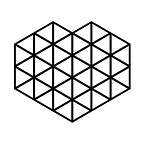How a $600,000+ 3D printer works
This summer I visited Gerg 3D, a rapid prototyping house nestled amongst Germany’s automobile giants. Inside their remote location in Munich’s countryside you’ll find a small collection of 3D printers that in combined value could buy you over 500 Makerbot Replicators +’s.
These mammoth machines, known as PolyJet machines, cure drops of liquid plastic on top of one another to build an object. This technology gives them the ability to print with high accuracy thanks to how small the cured drops are. You can even combine materials that have a range of properties ranging from soft and rubber-like to rigid and temperature-resistant. For prototyping, this means that parts are made as close to the finished product as possibly can be. This makes Polyjet technology extremely suitable for creating realistic prototypes for important exhibition or sales opportunities.
So how does it work? Here’s a play by play from file to finished object:
The Prep
Working with this kind of machinery comes with high material costs, so making sure your file is right before printing is of the utmost importance. In this stage the file is prepped, making sure all the bodies are separated if being printed in multiple materials.
The multi-material abilities of this technology allows for complex geometries to be created through the use of a gelatinous-like support material jetted alongside the object to stop gravity ruining your overhangs. On the top image you can see the blue of the 3D print in line with the white of the support, something that will later be removed. The solvable support also makes sure that the final surface is not left with support marks that you would normally see on FDM or Resin 3D prints, allowing for a completely smooth surface finish.
The Load
The beast then needs to be fed, so the first thing to do is check the material levels. Next to the PolyJet machine you’ll find a small rolling cupboard storing the range of materials that can be printed. The UV light that cures the liquid plastic also needs to be calibrated from time to time, ensuring that the drops of material are accurately placed. Once all this is done, you’re ready to get printing.
While visiting, we would be printing a turbocharger prototype for which the print time is roughly around 6–8 hours. This of course depends on the amount of support needed as well. The speed-to-resolution ratio you get from a PolyJet machine is one of the highest currently available, with most technologies putting out parts with a lower resolution but faster due to the difference in technology.
The Main Event
The technology inside a PolyJet machine is called material jetting which works similarly to inkjet printing, but instead of ink, a liquid plastic is jetted onto a build tray and then cured. The printing step also includes a process whereby a roller compresses the freshly printed layers of droplets with each pass of the printer head. This is one of the contributing factors that give PolyJet printed parts such a clean finish.
The Clean-Up
Well with all this jelly around the print, you now need to get it off! The work doesn’t stop when the printer does, and this is especially true for PolyJet 3D prints.
The first thing to do is to carefully remove the print off the build tray as not to damage it. The large chunks of support are removed with a wooden spoon. The print is then moved to the water jetting facility: think tiny high pressure super soakers in a windowed box to blast the the smaller pieces of support off. With some even smaller remnants of the support left, the print is placed into an ultrasonic bath to make sure all support is completely removed. The ultrasonic bath uses ultrasonic frequencies to form micro-bubbles that get into all the tight spaces to lift the dirt away.
The final two steps are a little bake in the oven to give the part more strength and a quick sandblast to improve the clean surface finish that PolyJet is famous for. An inspection is then done to check the dimensional accuracy and the part is ready to go!
The Applications
The PolyJet machine with it’s material jetting technology offers many advantages for rapid tooling and realistic prototyping, thanks to its diverse material selection, combination of materials and resolution.
This is one of the most precise 3D printing technologies available, printing with up to 16-micron layers (that’s thinner than a human hair).
Gerg 3D showcased some examples below, ranging from a custom microphone for Coldplay’s World Tour to a functional mould. A lot of the items you see and interact with on a daily basis - your car, your electronics and even items in the supermarket - have probably had at least one iteration through a PolyJet machine.
So, next time you get in your car, remember the steering wheel you’re holding and the door panel you’re sat next to probably came out of a $600,000 3D printer before it was mass manufactured onto your ride.
